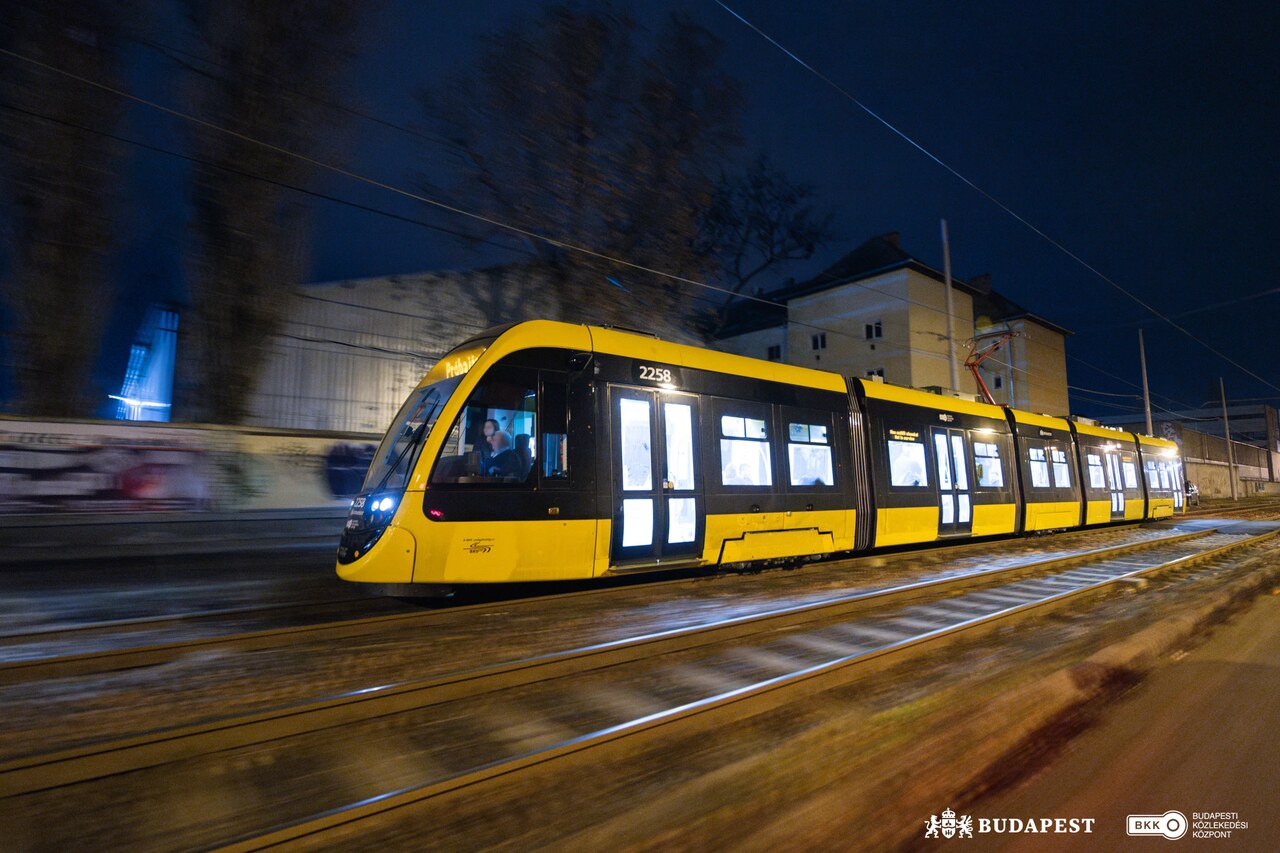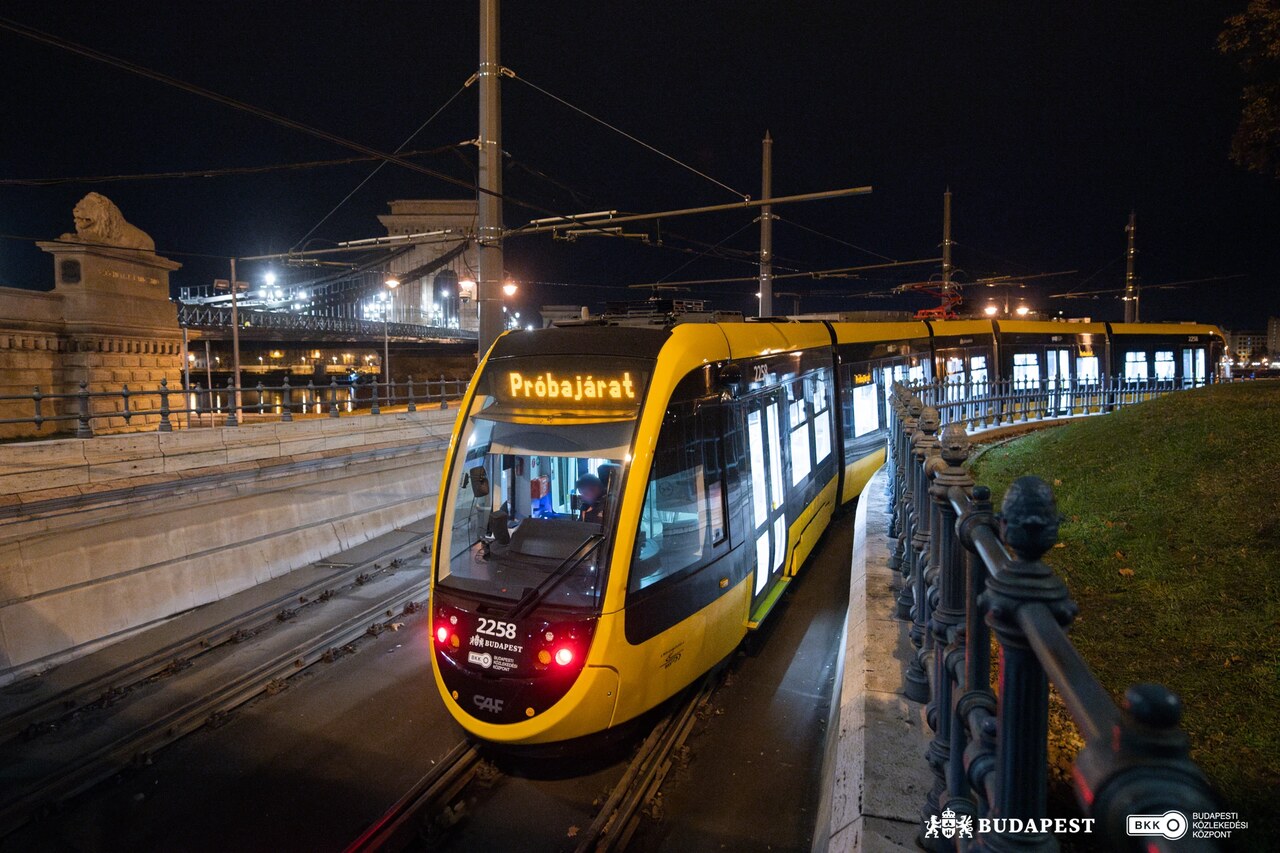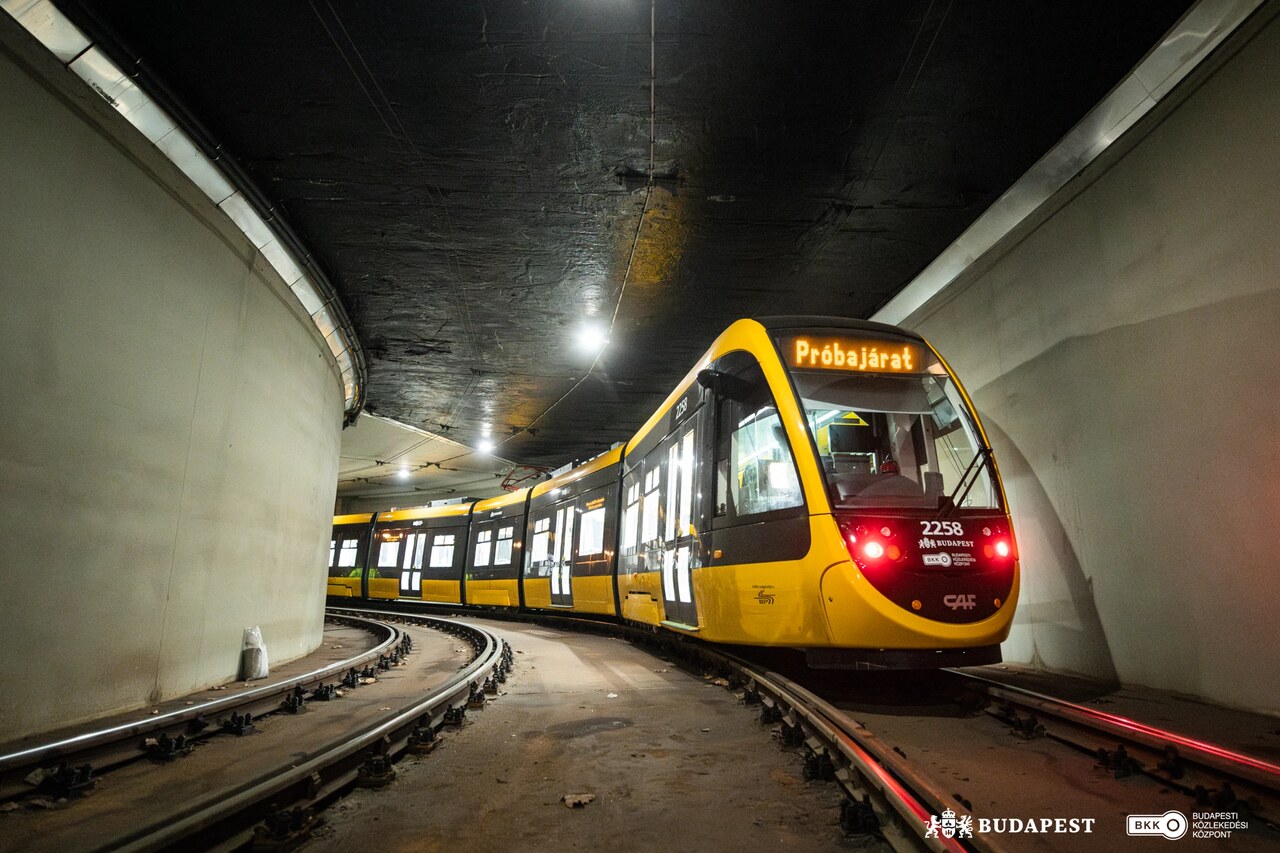Next-gen trams hit the streets of Budapest: New CAF fleet begins testing, here’s where to meet them

Budapest’s public transportation system is getting a major upgrade with the introduction of the new CAF trams. These modern, low-floor vehicles have started their initial testing phase, and they will be ready for passengers once they successfully complete the required 1,000-kilometer trial runs and pass all necessary inspections by transport authorities. Check out a gallery of the photos taken of the new CAF trams below!
The CAF fleet, which consists of 51 new trams, will significantly increase the proportion of low-floor trams in Budapest, from the current 30% to nearly 40%, BKK reports. The first of these trams has already begun testing without passengers, as part of the rigorous vetting process, which includes checking critical systems like brakes, air conditioning, and software for door operations.
These high-tech trams, manufactured in Zaragoza, Spain, are designed with an upgraded climate control system and a newly developed, more efficient body structure. The new vehicles offer a more comfortable ride, with enhanced features compared to the older CAF trams already in use in the city.
Following successful testing, the trams will undergo a mandatory 1,000-kilometer trial run. Once this is completed, along with flawless performance during an official inspection, the trams will be handed over to the Budapest Public Transport Center (BKK) and enter passenger service. Initially, the new vehicles will operate on the southern Pest lines, where they will boost the number of low-floor trams, making public transport even more accessible to all passengers, including those with mobility issues.
Ongoing fleet renewal
As part of an ongoing fleet renewal program, the addition of these new CAF trams will also allow for an expansion of low-floor vehicles on existing routes. The upgrades will affect the following tram lines in the future: 1, 14, 42, 50, and 69. Furthermore, with the full deployment of all 51 new trams, the modern vehicles will be seen on the 2, 23, and 24 tram lines, as well as the 51A and 62 lines—assuming that necessary EU funding and infrastructure improvements are secured.
The full fleet is expected to be in service by the end of 2026, with plans for even more modern trams to be added to the city’s transport network in the coming years. In fact, the BKK is already working on a tender to bring over 100 additional new trams to Budapest by 2030. With these updates, Budapest’s public transportation is set to become more efficient and comfortable, providing a state-of-the-art travel experience for residents and visitors alike.
Photo gallery




Read also:





